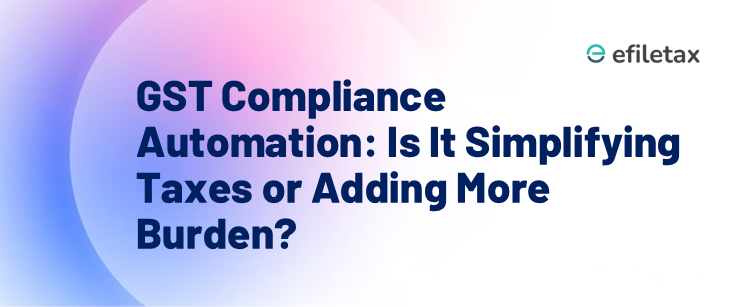
Introduction
Since its launch in 2017, the Goods and Services Tax (GST) in India has aimed to simplify indirect taxation. One of its core promises was GST compliance automation, designed to minimize tax evasion and reduce human errors. Over time, the government introduced e-invoicing and the Invoice Management System (IMS) to streamline tax filing. While these measures brought efficiency, they also introduced new complexities, particularly for small and medium-sized businesses.
The Rise of GST Compliance Automation
Initially, businesses had to manually file GSTR-1 for outward supplies, verify input tax credits through GSTR-2A/2B, and finalize tax payments using GSTR-3B. To reduce discrepancies and improve accuracy, the government implemented automated systems.
1. E-Invoicing: A Game-Changer or a Challenge?
The introduction of e-invoicing aimed to standardize invoice reporting and curb fraudulent claims. Businesses meeting the turnover threshold must generate invoices digitally, ensuring real-time reporting to the GST Network (GSTN).
Advantages:
- Minimizes tax evasion through verified invoices
- Reduces errors by auto-populating GSTR-1
- Enhances data consistency across GST returns
Challenges:
- Increased compliance costs, especially for small businesses
- Dependence on stable internet and updated software
- Risk of system failures causing reporting delays
Initially applicable to businesses with turnover above ₹500 crore, the e-invoicing threshold now includes those above ₹5 crore. Future expansions may extend the mandate to smaller enterprises, increasing compliance obligations.
2. Invoice Management System (IMS): Enhancing or Complicating ITC Claims?
The IMS was introduced to simplify input tax credit (ITC) reconciliation, allowing businesses to verify supplier invoices before claiming ITC.
How IMS Works:
- Accept: ITC is included in GSTR-3B
- Reject: ITC is removed from claims
- Mark as Pending: No effect until reviewed
While this system improves accuracy, it requires businesses to constantly verify transactions. Any mismatch can result in ITC denial, affecting working capital.
Frequent Regulatory Changes: A Struggle for Businesses
Adapting to GST is not just about automation—it also involves keeping up with constant regulatory updates. Changes in tax rates, return filing formats, and compliance rules force businesses to remain agile. Many firms face challenges in updating their internal processes, investing in technology, and training staff.
Case Law: When ITC Denial Becomes a Legal Battle
Recent judgments have addressed wrongful ITC denials due to procedural lapses. Courts have ruled that taxpayers cannot be penalized for errors made by suppliers. Such cases highlight the need for better clarity and fairer implementation of GST rules.
The Future of GST Compliance Automation
The government envisions a fully automated GST filing system, eliminating manual intervention. However, for this vision to succeed, automation must ease compliance rather than add complexity.
Key Areas for Improvement:
✅ Gradual implementation for smaller businesses
✅ Simplified compliance processes with user-friendly interfaces
✅ Stronger IT infrastructure to prevent system failures
Conclusion
GST compliance automation is a double-edged sword. While it enhances transparency and efficiency, it also increases complexity for businesses. A balanced approach—one that merges technology with practical solutions—can help India transition smoothly into a fully automated tax system.